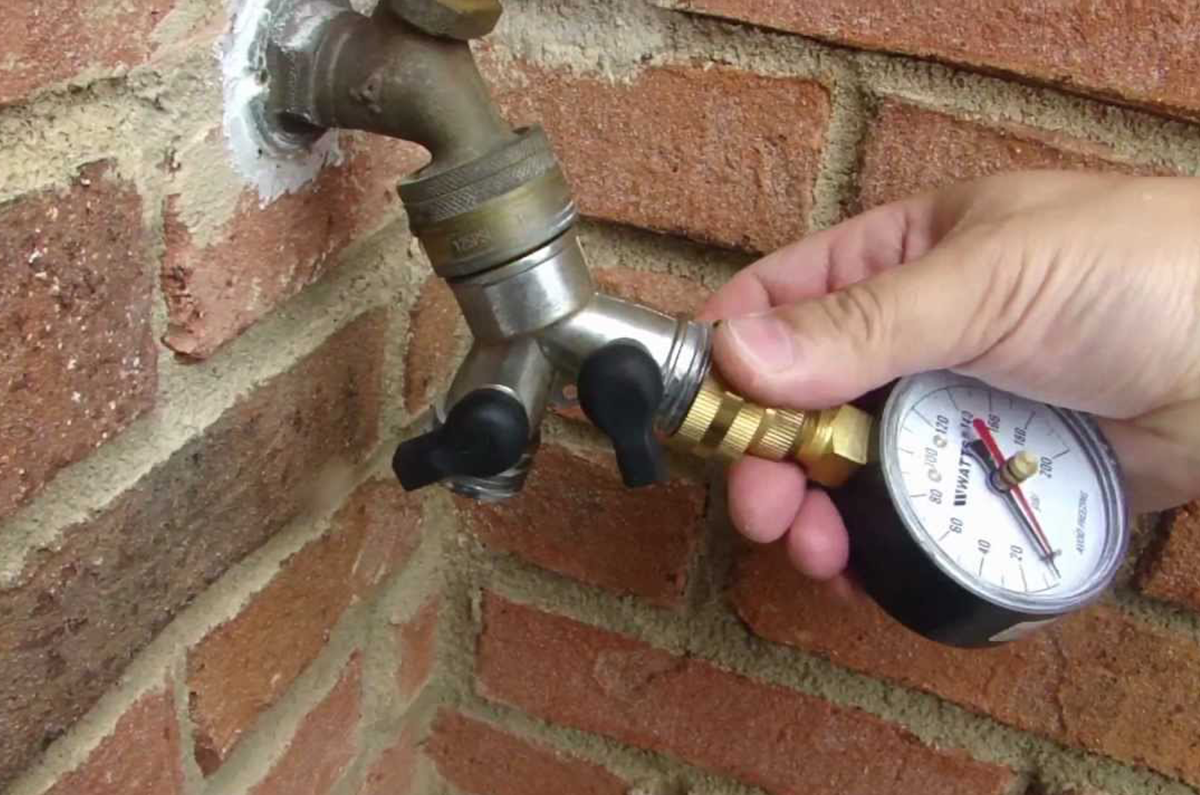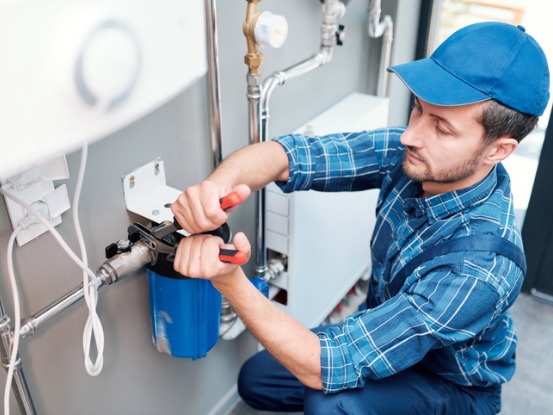Simple Advice for Resolving Low Water Pressure in Your Home
Simple Advice for Resolving Low Water Pressure in Your Home
Blog Article
Just how do you feel when it comes to 10 Reasons for Low Water Pressure in Your House?

Low tide pressure in your home can be a frustrating problem, impacting whatever from showering to washing recipes. If you're experiencing weak water circulation, there are several possible causes and services to discover. In this overview, we'll discuss usual reasons for low tide stress and useful actions to attend to the problem effectively.
Intro to Low Water Pressure
Low water stress happens when the circulation of water from your taps, showers, and various other components is weaker than usual. This can make daily jobs more difficult and less efficient. Recognizing the reasons for low water stress is vital to finding the best remedy.
Usual Causes of Low Water Pressure
Pipe Obstructions
Gradually, pipes can end up being clogged with mineral deposits, sediment, or debris, restricting the circulation of water. This is a common problem in older homes with galvanized steel pipes.
Corrosion
Rust within pipelines can result in leaks and reduced water stress. Corrosion buildup can restrict water flow, especially in aging plumbing systems.
Faulty Pressure Regulators
Pressure regulators are responsible for preserving consistent water stress in your house. If they malfunction, it can cause low water pressure or uneven circulation throughout the house.
Local Supply Of Water Issues
Occasionally, the trouble lies outside your home. Community water system concerns, such as main line leaks or maintenance job, can momentarily minimize water pressure in your area.
How to Detect Low Water Pressure
Checking Faucets and Components
Start by testing the water stress at different taps and fixtures throughout your home. If the issue is isolated to particular areas, it may indicate localized issues.
Inspecting Pipes
Inspect visible pipelines for signs of leaks, rust, or clogs. Take note of any uncommon sounds, such as knocking or rattling pipes, which can suggest issues within the plumbing system.
Consulting with a Plumber
If you're not able to determine the cause of low water stress, consider hiring a specialist plumber to carry out a thorough evaluation. They can recognize underlying problems and suggest suitable solutions.
DIY Solutions to Fix Low Water Pressure
Cleansing Aerators and Showerheads
Mineral deposits can gather in aerators and showerheads, decreasing water flow. Get rid of and clean these components routinely to boost water stress.
Flushing Hot Water Heater
Debris buildup in the water heater can limit circulation and reduce effectiveness. Purging the storage tank occasionally assists get rid of sediment and keep ideal performance.
Examining Pressure Regulator
Make sure that the pressure regulatory authority is operating properly. Adjusting or changing the regulator can help bring back correct water stress throughout your home.
Clearing Clogs in Piping
For minor obstructions, attempt utilizing a plumbing serpent or chemical drain cleaner to clear blockages in pipelines. Be cautious when making use of chemicals and adhere to safety standards.
When to Call a Professional Plumber
If do it yourself initiatives stop working to deal with the problem or if you suspect substantial plumbing issues, it's ideal to seek aid from an accredited plumber. They have the competence and tools to attend to intricate problems securely and efficiently.
Preventive Measures to Keep Water Pressure
Regular Upkeep
Set up routine upkeep for your plumbing system to avoid issues such as deterioration, leaks, and obstructions. Resolving minor issues early can assist prevent even more considerable fixings later.
Installing a Pressure Booster
Consider setting up a stress booster pump to enhance water stress in areas with consistently low flow. This can be specifically helpful for multi-story homes or buildings with high-demand fixtures.
Surveillance Water Use
Bear in mind water use behaviors and stay clear of overtaxing the plumbing system. Simple changes, such as incredible showers and laundry loads, can assist maintain adequate water pressure.
Final thought
Dealing with low water stress can be aggravating, yet recognizing the underlying causes and executing appropriate solutions can restore optimal circulation throughout your home. Whether it's cleaning up aerators, evaluating pipes, or consulting with a plumber, taking proactive steps can make sure a stable supply of water for your daily demands.
FOUR WAYS TO FIX LOW WATER PRESSURE NOW
Turning on a shower or faucet only to find the water comes out in a sad, slow drizzle is never a good feeling. How exactly are you supposed to wash a pan or take a quick shower when it takes 10 minutes just to rinse off a little soap? The good news is that when your water pressure is bad, there's always a cause: typically one that can be easily fixed. Here are some of the most common causes of low pressure and what you can do to fix the issue:
DEBRIS AND MINERAL DEPOSIT BUILDUPS
If you notice low water pressure from just one or two of the fixtures in your house, the problem likely has to do with debris buildup. Water is full of minerals and other debris, all of which can accumulate in your pipes and on your fixtures. This can cause a blockage that affects how much water flows through. To fix this, try filling a small plastic bag with white vinegar, and use a rubber band to hang it around your showerhead or faucet. Let the head of the fixture soak for a few hours, and the vinegar should loosen the deposits.
WATER LEAKS
Leaks are another common cause of low water pressure. If water is flowing out of your plumbing through a hole or crack before it can reach your fixture, the pressure coming out of the faucet or showerhead will be lower. A plumbing professional is your best bet for finding and repairing a leak in your water supply pipes.
Leaks are another common cause of low water pressure. If water is flowing out of your plumbing through a hole or crack before it can reach your fixture, the pressure coming out of the faucet or showerhead will be lower. A plumbing professional is your best bet for finding and repairing a leak in your water supply pipes.
FOUR WAYS TO FIX LOW WATER PRESSURE NOW
Turning on a shower or faucet only to find the water comes out in a sad, slow drizzle is never a good feeling. How exactly are you supposed to wash a pan or take a quick shower when it takes 10 minutes just to rinse off a little soap? The good news is that when your water pressure is bad, there's always a cause: typically one that can be easily fixed. Here are some of the most common causes of low pressure and what you can do to fix the issue:
DEBRIS AND MINERAL DEPOSIT BUILDUPS
If you notice low water pressure from just one or two of the fixtures in your house, the problem likely has to do with debris buildup. Water is full of minerals and other debris, all of which can accumulate in your pipes and on your fixtures. This can cause a blockage that affects how much water flows through. To fix this, try filling a small plastic bag with white vinegar, and use a rubber band to hang it around your showerhead or faucet. Let the head of the fixture soak for a few hours, and the vinegar should loosen the deposits.
WATER LEAKS
Leaks are another common cause of low water pressure. If water is flowing out of your plumbing through a hole or crack before it can reach your fixture, the pressure coming out of the faucet or showerhead will be lower. A plumbing professional is your best bet for finding and repairing a leak in your water supply pipes.
Leaks are another common cause of low water pressure. If water is flowing out of your plumbing through a hole or crack before it can reach your fixture, the pressure coming out of the faucet or showerhead will be lower. A plumbing professional is your best bet for finding and repairing a leak in your water supply pipes.
A VALVE ISSUE
If you have low water pressure throughout your home, check your main shut-off valve to make sure it's completely open. You may also want to see if there's a pressure-reducing valve installed. If there is, have a plumber help you adjust the settings to get the pressure you're looking for.
OTHERS USING WATER
Believe it or not, your low water pressure could be caused by your neighbors. If you notice low pressure at certain times of day, it may be because you and the people living next to you have similar schedules - when everyone is showering at the same time, the pressure will be lower in every home. Low pressure throughout the neighborhood may also be caused by an issue with your municipal water supply. If that's the case, call the supplier to see if they're working on the issue.
https://www.rotorooter.com/blog/water-leaking/low-water-pressure-fixes/

Do you appreciate more info about 4 Ways to Troubleshoot Low Water Pressure? Leave a remark directly below. We would be glad to know your opinion about this entry. Hoping that you visit us again later on. If you please set aside a second to promote this blog entry if you appreciated it. We recognize the value of your readership.
Click Here Report this page